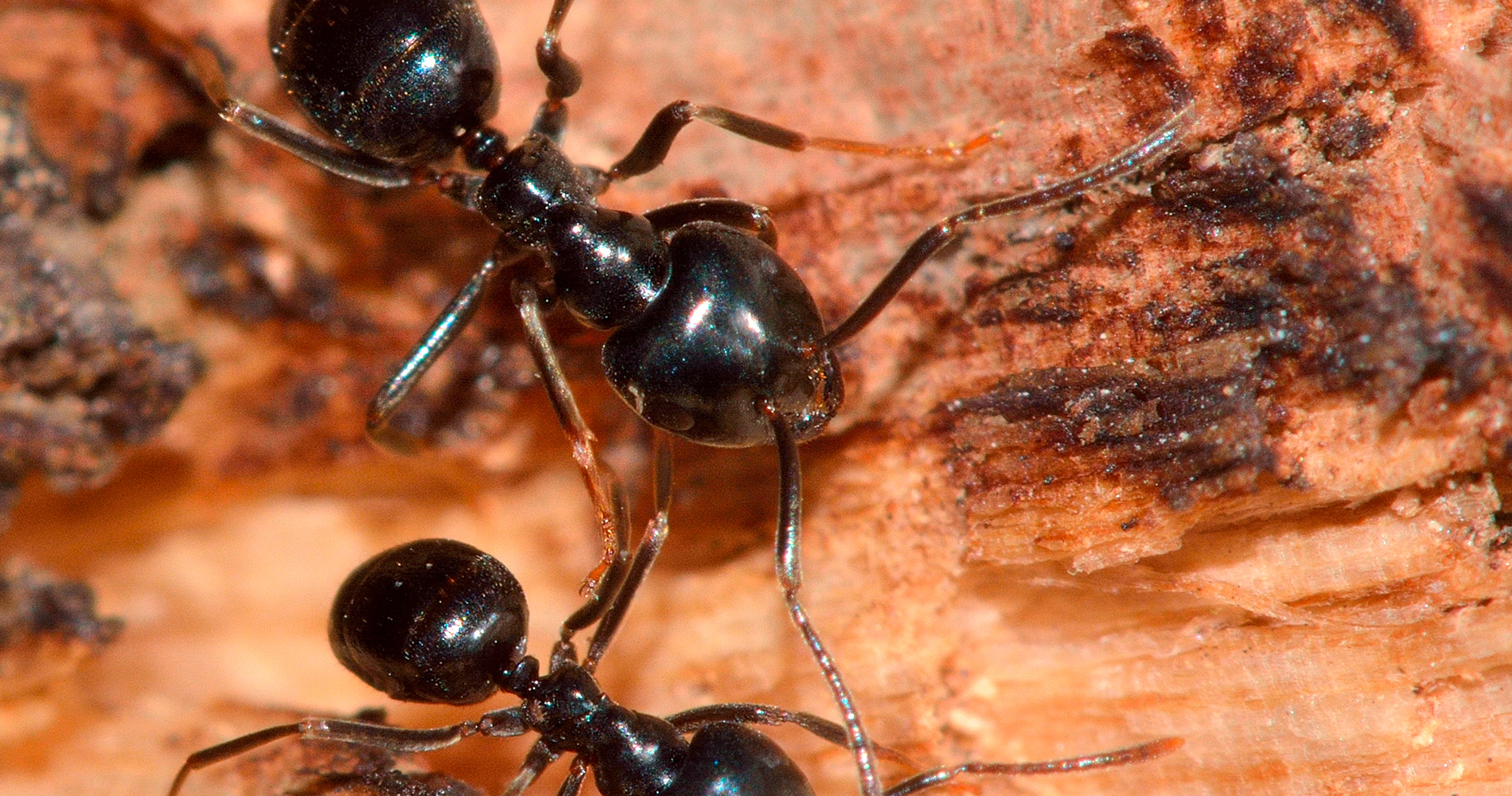Jet ant
(Lasius fuliginosus)

Biology:
The female workers of this species, which belongs to the formicine ants (Formicinae) subfamily, are 4 to 6 mm long and are deep black in colour, which is enhanced by their extreme lustre (hence the name). Their extensive carton nests can be found predominantly in hollow tree trunks, old fence posts and similar. However, they also create these in buildings in the masonry, in cracks in the walls and ideally in wooden beams, which do not necessarily need to have pre-existing damage. Their often extensive colonies are made up of several partial nests, which all have several to lots of queens.
Damage:
The damage caused is the same as for the pavement ant and the black garden ant. Furthermore, these ants can be associated with material damage when they create their nests in buildings and houses as they affect wooden parts (beams, etc.). As a result, they can cause significant damage by destroying the building material.
